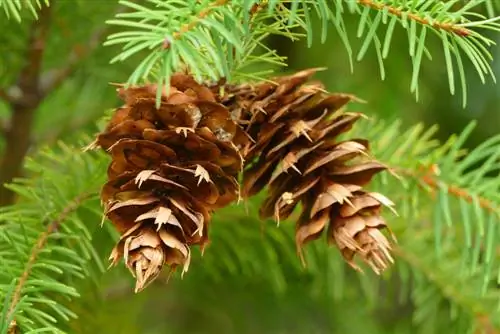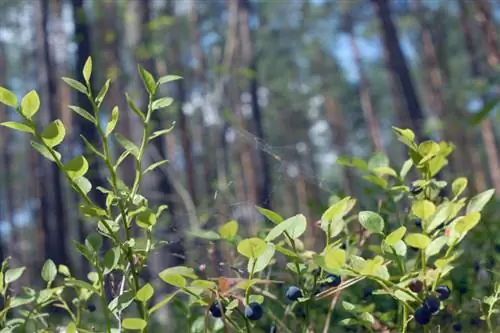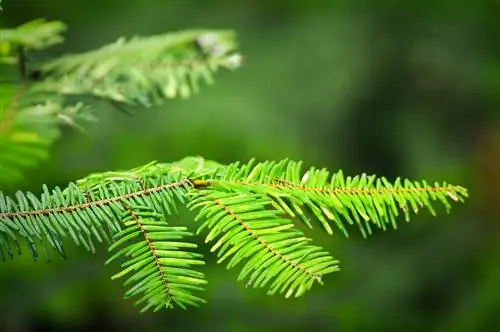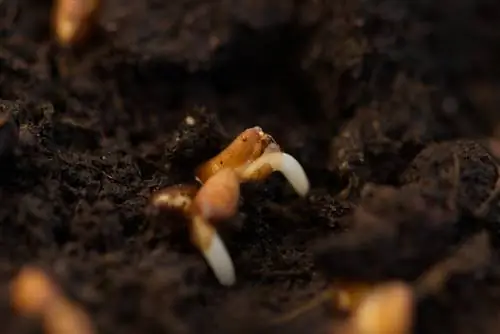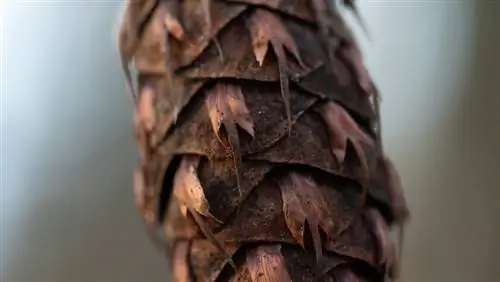- Author admin [email protected].
- Public 2023-12-16 16:46.
- Last modified 2025-01-23 11:21.
Every Douglas fir, no matter how large, grew from a seed. Years later, it forms many cones of its own to ensure the continued existence of the species. What can we really do with it in gardening practice?
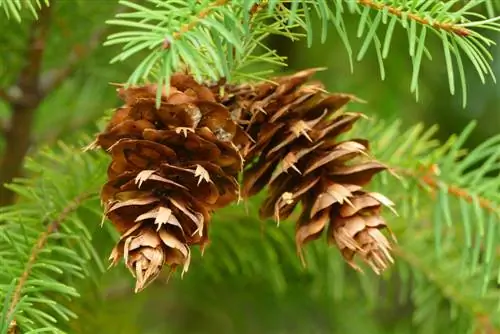
What should you know about Douglas fir seeds?
Douglas fir seeds are about 5-6 mm long, have a wing and ripen in cones in September. They can either be harvested yourself or purchased online and are also used to propagate Douglas fir and as edible seeds in dishes.
The appearance of the seeds
Douglas fir seeds are hidden in the cones during their ripening period and are only released after ripening.
- are about 5 to 6 mm long
- every seed has a wing
- this is longer than the seed itself
Harvest your own seeds
The Douglas fir takes a full 15 to 40 years until it blooms for the first time. Even if the tree has already reached an impressive size, it can only be harvested when the cones appear on it. Until then, patience is required.
- the seeds are ripe around September
- then all the cones fall from the tree
- Take seeds from it
The fallen cones must be picked up promptly so that the seeds do not spoil due to soil moisture. Of course, cones can also be picked directly from the tree, but as a layperson it is difficult to determine the optimal harvest time.
Buy seeds commercially
If you want to save yourself the trouble of harvesting seeds or can't find a suitable Douglas fir, you can easily order them online. The seeds are offered inexpensively as an alternative to seedlings.
However, propagating Douglas fir from seeds is a real challenge for hobby gardeners. Familiarize yourself with the sowing process before placing your order. Words like “stratify” should then be familiar to you.
Seeds are also edible
Douglas fir seeds are edible and can be used, for example, roasted for patties. However, buying them for this purpose is very expensive. When your own Douglas firs are already blooming, the seeds can be extracted from the cones. However, to obtain one kilogram of seeds, around 100 kg of cones must be processed.

